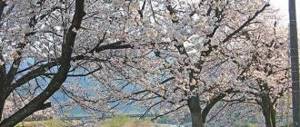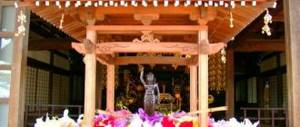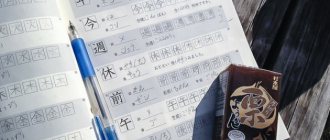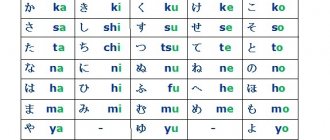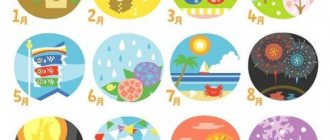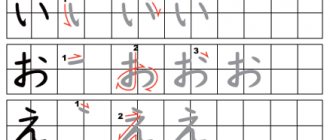Tanabata Festival in Japan
“On July 7, the Emperor appears on the upper veranda of Omima Palace to inscribe elegant waka
on the leaves of the kaji
paper
and present the poems to two stars: Prince Altair and Princess Vega.
According to legend, star lovers could meet crossing the Milky Way only once a year - on this July night.
For the Star Festival ceremony, 7 kaji tree leaves and 2 long pieces of traditional sakubei
steamed
flour
and rice, and 7 strands of thin somen
noodles
.
Nearby on a tray are 7 ink tiles, 2 brushes, an ink stick and a taro
for storing dew drops. Next, the servants rub the ink with dew drops, and the emperor writes poetry on each of the 7 leaves, using ink from a different ink tile for each leaf.”
This is the short and simple story about the Tanabata ceremony (formerly the “Star Festival”) at the Imperial Palace in Kyoto that history has left us.
The Star Festival has its origins in the Petition for Mastery festival, which was celebrated by the emperor's entourage and palace aristocracy in Kyoto during the Heian era (roughly 794 to 1185). The festival came to the general public in the early Edo era (the first half of the 17th century), when the traditions of the festival mixed with various ritual actions of the Buddhist Obon ceremony, and gradually the festival transformed into the modern Tanabata festival. In the Edo period, girls were expected to be proficient in sewing and similar painstaking work, and boys were expected to be skilled in perfecting their handwriting when writing wishes on thin pieces of paper.
Bamboo branches with tanzaku in Arashiyama Square, a suburb of Kyoto (Photo: S. Fukuchi, calend.ru)
Today,
on the day of the Tanabata festival, the Japanese compose, sometimes in poetic form,
and write wishes on long rectangular strips of colorful paper called
tanzaku
.
Then they decorate bamboo branches prepared especially for this July festival with their creations. Traditionally, bamboo branches with tanzaku can be seen along rivers and canals, near shops, hospitals and hospital lobbies, in restaurants, near schools and even kindergartens. It is interesting that clean tanzaku leaves and writing materials are always prepared and laid out here. After making a purchase or having lunch at a restaurant, you can immediately write your wish and attach it to the nearest thread. And then - patiently wait for its fulfillment.
Of course, teenagers, high school students, and students are the most partial to the holiday.
On college campuses, serious preparations are underway for July 7, or rather, for the night of July 6-7, when the meeting between Vega and Altair takes place.
Here you can see trees decorated with tanzaku (many tanzaku take the shape of hearts), paper lanterns, talismans, and homemade concert stages, and trays with prepared food. The evening will come, young people and girls, dressed in light summer kimonos called yukata
, will begin the celebration, hoping for the fulfillment of all their wishes, most of which are the hope of meeting their one and only love.
There are several legends about the origin of the Tanabata Star Festival. In the Japanese version, the most famous and romantic is about the love of the girl Orihime (literally - “spinning princess”)
and the young men
Hikoboshi (literally - “herding cows”)
. And it was like this...
Write your wish on a kaji tree leaf (Photo: S. Fukuchi, calend.ru)
A girl named Orihime, the daughter of the heavenly king Tenko, was spinning beautiful clothes on the banks of the Heavenly River. Her father was very fond of the clothes that his daughter spun, so the girl had to work tirelessly every day. Everything would be fine, but because of her hard work, Orihime could not meet or fall in love with anyone. Taking care of his daughter, Tenko arranged for her to meet a young man named Hikoboshi, who lived and herded herds of cows on the opposite bank of the Heavenly River. As soon as the young people met, they immediately fell madly in love with each other and got married in a short time.
Everything would be fine, but, being bound by family ties, Orihime could no longer spin clothes for Tenko, and the cows that Hikoboshi had previously grazed so diligently scattered throughout the heavenly field. Angered by this, Tenko separated the lovers, leaving them on opposite sides of the Heavenly River and forbade them to meet. Orihime became sad and despondent after losing her husband. Inconsolable, she asked her father for permission to meet her beloved. Touched by his daughter's tears, Tenko allowed the young couple to meet on the seventh day of the seventh month if Orihime worked diligently and finished spinning.
Everything would be fine, but the first time the lovers tried to meet, they discovered that they could not cross the river - there was no bridge across the river. Orihime cried so much that the magpies flocked and promised to build a bridge across the river, spreading and joining their wings so that the lovers could meet. Everything would be fine, but the magpies also said that if it rains, they will not be able to fly in and fulfill the promise, and the two lovers will have to wait until next year...
Fire, flowers and phalluses: 10 festivals in Japan
There are countless local festivals (祭り, Matsuri) in Japan because almost every temple celebrates one of its own holidays. Most festivals are held annually and honor the main deity of the shrine or a seasonal or historical event. Some festivals take place over several days.
CONTENT
Matsuri
An important element of Japanese festivals are processions in which the local shrine kami (Shinto deity) is carried through the city in Mikoshi (palanquins). This is the only time of year when the kami leaves the temple to be carried through the city.
Where else can you find (other than environmental issues) an entire mountainside lit up with fire for the amusement of the locals, or a giant wooden penis carried through the center of a city as if it were a mystical totem? Here are some of the best and craziest Matsuri in the Land of the Rising Sun.
Gion Matsuri, Kyoto
Gion Matsuri, Kyoto
Perhaps the best of the best, Gion Matsuri is held in Kyoto during the month of July, emanating from small neighborhoods and eventually spreading throughout the city center. The festive evenings preceding the procession (yoyama) are also very pleasant. Another reason for the impressive festival is its long and almost continuous history. It dates back to 869 as a religious ceremony to appease the gods during an epidemic. Even today, the festival continues the practice of choosing a local boy as the divine messenger. The child cannot set foot on the ground from the 13th until he passes through the city on the 17th. Ironically, the main events of the Gion Matsuri do not actually take place in the Gion area, but on the opposite side of the Kamo River. Specially designed platforms (Yamaboko Junko) are transferred from Yasaka Shrine to Otabisho.
Snow Festival, Sapporo
Snow Festival, Sapporo. Come see the world's famous buildings recreated in ice, stop for an Ishiya hot chocolate and sing at the ice karaoke bar. The Sapporo Snow Festival is held every year for a week in February at three main sites: Odori Park, Tsudome and Susukino and attracts over two million people! As the name suggests, this festival is all about snow and ice sculptures. The snow festival on the northern island of Hokkaido is divided into three parts: massive sculptures in the center of Odori Park, ice art in Susukino and the Satoland children's area with a maze, slide and obstacle course.
Nebuta Matsuri, Aomori
Nebuta Matsuri, Aomori. Almost every city in Japan has its own Tanabata festival to mark the time when the stars Altair and Vega are closest (August 7). At the very beginning of hot August, the streets of Aomori in the very north of the island of Honshu are filled with fantastic characters - fairy-tale heroes, animals, famous actors, great samurai... Huge platforms on wheels up to 9 meters long and up to 5 meters high roll through the city with thousands of singing, playing taiko drums and pipes and simultaneously jumping townspeople. Each team has its own ri and uniform. But the main thing is the giant paper structures, illuminated by hundreds of light bulbs. Nebuta Matsuri is one of the three main festivals of the Tohoku region, the largest lantern festival in Japan, lasts until August 7th. Each of the six days of the holiday ends with a grandiose fireworks display over the sea.
Ohara Matsuri, Kagoshima
Ohara Matsuri, Kagoshima . Not many tourists are willing to head to this southern capital for the citywide dance festival, but if the stunning hot springs aren't enough for you, enjoy entire streets full of children dancing in specially designed kimonos to the beat of Taiko.
Ohara Matsuri, a dance festival held at Tenmonkan in central Kagoshima, attracts approximately 20,000 people. It is also the largest festival of its kind in Southern Kyushu. Dancing in unison with traditional music such as Ohara-Bushi (a popular Kagoshima tune) and the like. Participants come dressed in traditional yukata (summer kimono), happi (festive coat), and some even wear homemade costumes. This festival begins with a dance procession from Grand Central Station and ends with small performances in Central Park. Spontaneous participation is also highly encouraged!
Yaedake Cherry Blossom Festival, Okinawa
Yaedake Cherry Blossom Festival, Okinawa . Many cherry blossom lovers begin their journey north when the first flowers bloom on the island of Okinawa. In January or February, the first cherry festival of the year is celebrated with food and drink under the blossoming trees. Nothing special, but enough to attract crowds of tourists and give onlookers bragging rights for being among the first to see those beautiful pink petals, the subject of so many haiku.
Tono Matsuri, Tono
Tono Matsuri, Tono. Another underrated festival in rural Japan, Tono Matsuri is the best place to see Yabusame or horse-drawn archery. Trained riders will move at top speed with the crowd and perform precise shooting with a traditional Japanese bow.
Hadaka Matsuri, Okayama
Hadaka Matsuri, Okayama. There are quite a few of these naked festivals in Japan, but the most famous one is held in Okayama. It is a noisy festival celebrating good fortune and happiness, with crowds of thousands of nearly naked men competing for lucky objects thrown by priests.
Up to 10,000 people take part in the celebrations, dressed only in simple white loincloths and tabi socks. This is quite a feat because the festival is held on the third Saturday of February. They spend an hour or two running around the temple grounds through pools and water fountains, an act that is said to cleanse the body and soul.
The goal is to catch one of two wooden incense sticks called singi, which are thrown into the crowd by the temple priest. There are actually 100 more lucky items thrown into the crowd. While not as coveted as wands, which bring good luck to the recipient throughout the year, all of these items are highly coveted and the competition is fierce. Why this particular ritual had to be performed wearing loincloths is anyone's guess.
Games with fire
Playing with Fire. So many options when it comes to the Japanese and fire festivals. The Sagicho Matsuri in Omahachiman is well known for its fire dancers. The umbrella burning festivals in Kagoshima and Kanagawa are certainly unique. Perhaps the most prominent in the country is the Mount Aso Fire Festival, which culminates in the burning of a field down the slope of this supervolcano to form the largest Chinese character in the world.
The Aso Fire Festival is a month-long festival held in towns around the volcanic Mount Aso in Kyushu.
Soga Don no Kasayaki . A tower of 200 colorful umbrellas placed on the banks of the Kotsuki River in honor of the two brothers is burned. These brothers used umbrellas as torches according to old Japanese history.
Hounen Matsuri, Komaki
Hounen Matsuri, Komaki. Oh yeah: what list would be complete without a festival featuring a giant wooden phallus? Despite the obvious sexual implications, most of these Japanese matsuri are intended to celebrate fertility and a bountiful harvest. In Canamara, people can enjoy souvenirs, flags, banners, even food with a phallic theme.
Views: 2,093
Share link:
- Tweet
- Share posts on Tumblr
- Telegram
- More
- by email
- Seal
Liked this:
Like
